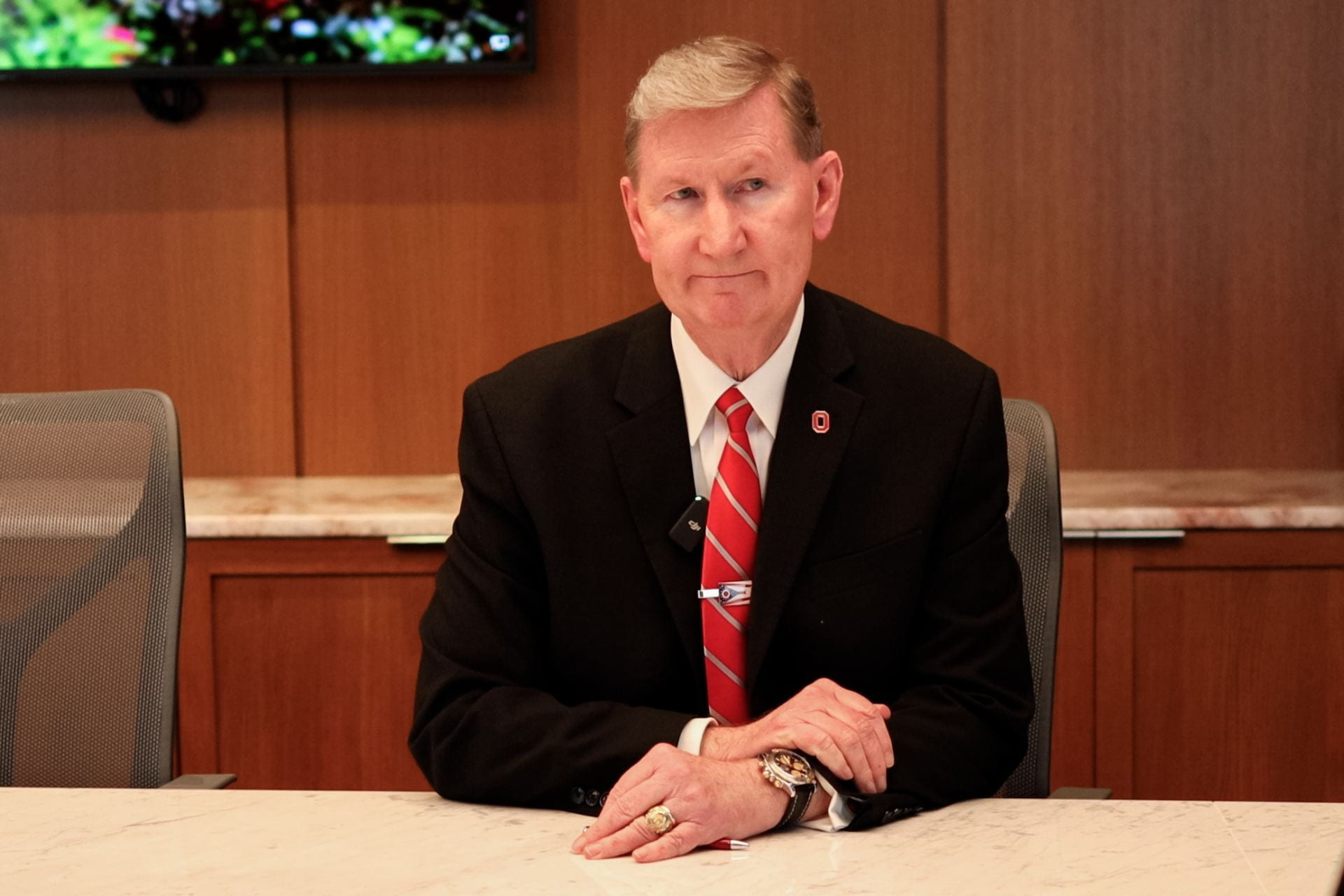
On Wednesday, university President Ted Carter Jr. talked to The Lantern about his first 100 days of presidency and what he plans to discuss at his State of the University address on Thursday. Credit: Molly Goheen | Managing Editor for Digital Content
After 100 days in office, university President Ted Carter Jr. said his position has given him a sense of belonging like no other job he’s had. On Thursday, he will share this revelation with the university at large.
The Lantern sat down with Carter Wednesday to get a preview of his remarks for Carter’s State of the University address, which will take place at 12:30 p.m. in the Ohio Union and will be available to the public via livestream on the university’s website.
“Every single day that I’ve been here, I wake up and I come to the realization that I’m where I’m supposed to be,” Carter said. “I’ve never felt that way more than any job I’ve ever had in my life, however it happened.”
In an interview with The Lantern on Jan. 24, Carter stated that by his 100-day mark, he would produce a “written strategy” detailing his plans for the university’s future over the next three to 10 years.
Wednesday, Carter said his attitude toward the presidency thus far has been “listening and learning mode.” Through this approach, he has allocated considerable time to familiarize himself with various local public officials, university departments and faculty. Carter said this mentality will be reflected in his address.
“I’m not going to get in front of the microphone and start introducing new policies,” Carter said. “That’s part of this listen-and-learn mode. I will start speaking to a vision and the vision will turn into a strategy over the next few months, done in a collaborative spirit that will eventually turn into a document that will be prepared to roll out probably sometime in the fall that will look forward to the next five, even 10 years, of where we think we should be going.”
As for specific initiatives he hopes to propose as part of this written vision, Carter said he intends to look toward the university’s past.
“I want to make sure that people understand how much I respect the history of Ohio State, going all the way back to 1870 — how we were formed, why we were formed, what we have become now over 154-year history,” Carter said. “I think it’s important for us to understand that because if we don’t know where we’ve been and a little bit more about where we are, we don’t have a very good picture of where we need to go.”
Yet, Carter said some of Ohio State’s central pillars — academic excellence, affordability and accessibility, meaningful research, arts, athletics and the Wexner Medical Center — strictly rely on looking ahead.
“We have a responsibility to never rest on our laurels,” Carter said. “We can do better, and the things that can make us better, bigger, stronger, are not the same things that worked 10 years ago.”
Carter said making higher education more accessible and affordable is still part of his mission as Ohio State’s president. Furthermore, he believes the university is headed in the right direction, as its rate of students graduating debt-free trends 20% higher than the national average, which he will report at Thursday’s address.
“Forty-two percent of our students today are leaving this university with some amount of debt, which means 58% of our students are leaving here without any debt,” Carter said. “Whether they paid for it, got it through a scholarship, however they got there, they’re still leaving here without a loan, or some sort of money they owe for their education.”
Referencing a practice already implemented by the Wexner Medical Center, Carter said he plans to release a 14-question survey to faculty and staff asking how the university is doing as a whole. He hopes to have a set of data points that will further assist him in making future university decisions.
“I want to hear the voices of those that are here on campus,” Carter said.


